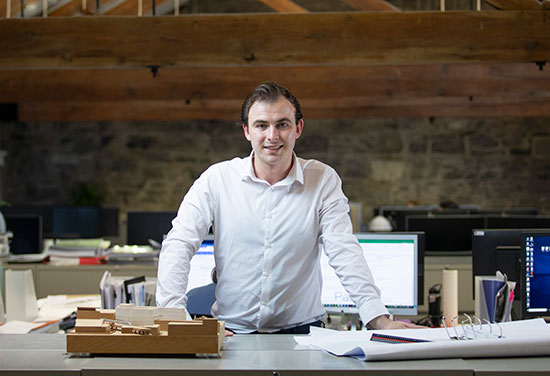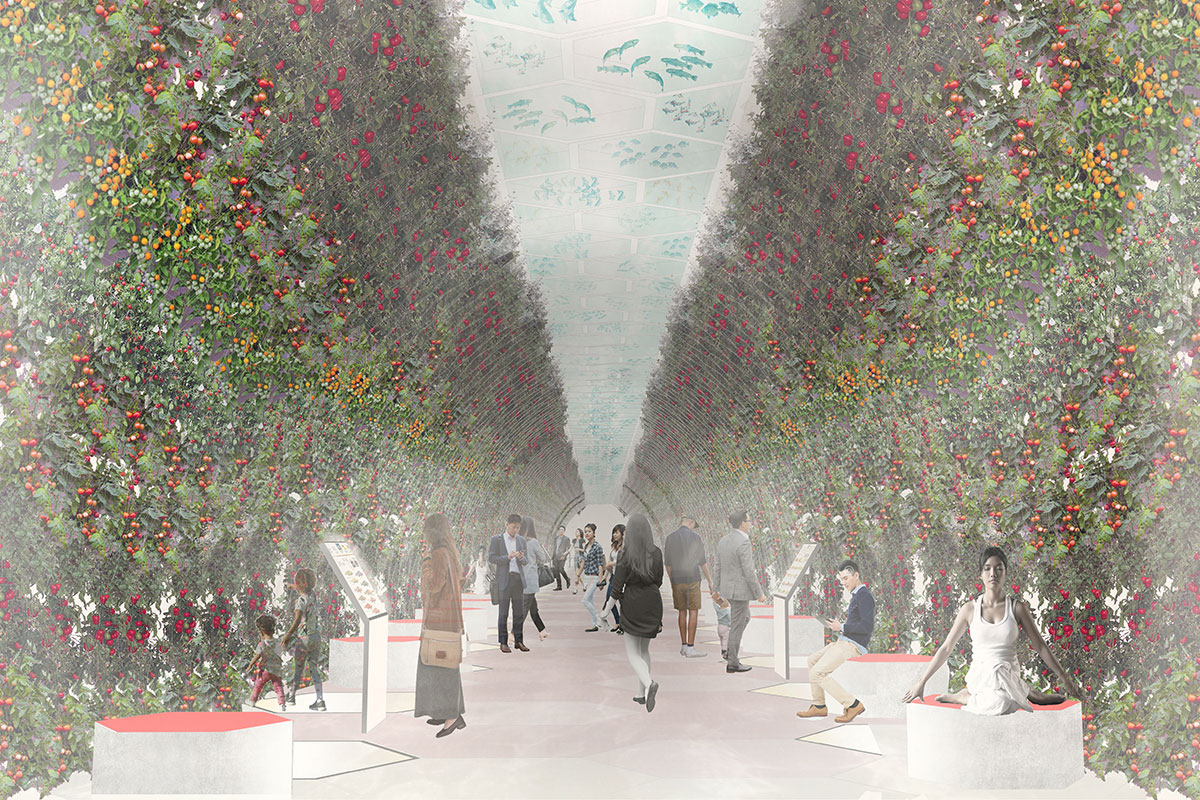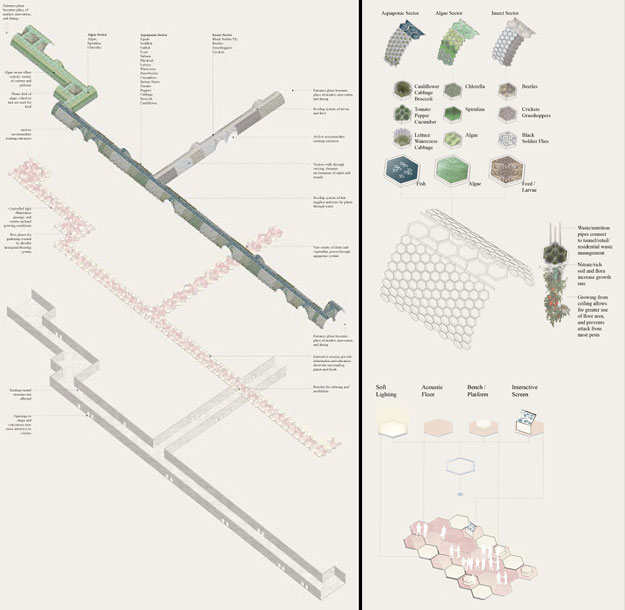#{Title}
#{Copy}
 Dublin architect Niall Walsh discusses his competition winning design, Food for Thought, which champions a vision of urban farming as a tool for architectural, social, and economic transformation.
Dublin architect Niall Walsh discusses his competition winning design, Food for Thought, which champions a vision of urban farming as a tool for architectural, social, and economic transformation.
The TUBE 8x8x300 Conceptual Design Competition asked for innovative ideas for the adaption and reuse of an evacuation passageway in the city of Kunming, capital of Yunnan Province in China. This passageway is 8m high, 8m wide and 300m long and connects several sunken entrance plazas of a big underground shopping mall.
My design concept, Food for Thought, puts forward the vision of urban farming as a tool for architectural, social, and economic transformation. The evacuation tunnel, once ignored by the city, is activated by a landscape which produces, celebrates, and showcases the connection between us and what we eat. This blend of architecture, biology, and agriculture, working in harmony to create awe-inspiring urban experiences, can transform not only how our cities look, but how we eat and how we think. The question asked in this competition is an important one around the world - how do we reactivate and re-energise unused or abandoned spaces? Whether that is an abandoned car factory in Detroit, Michigan, a former steel plant in Beijing, an abandoned tunnel on the London Underground or, as here, an underused evacuation tunnel in Kunming. The question of how we can use cities more efficiently, more proactively and more sustainably, is a global question. This competition is an important part of creating that global conversation about how architecture can be a tool for improving how we live.

The scheme’s design is based on a hexagonal module, which replicates to form an arched ‘tunnel within a tunnel’. These hexagonal modules can be 3D printed, constructed manually or by machines, to become the skeleton structure for the urban farming system. As you move through the tunnel, you experience three food groups – aquaponics (which combines fruit, vegetables and fish), algae farming, and insect farming. The urban experience of these three groups is different, but they are all linked by a circular system. In fact, the existing servicing infrastructure along the ceiling of the tunnel, is simply expanded to transport waste and materials between the modules. As well as transforming the tunnel into a beautiful urban experience, the output is a healthy, varied diet of fruits, vegetables, proteins, and supplements, as well as a variety of possible off-shooting industries, from biofuel to medicine.
This highly refined, mechanised, technical system manifests as a ‘garden of delight’ for both people living in the city and visitors. The passageway, which allows the tunnel to continue in its essential evacuation format, transforms into a new labyrinth of nature. Walking through the tunnel, the user transitions from the gentle play of the fish and the aroma of fruits, to the eclectic glow of algae, and the lively buzzing of insects. A new flooring system throughout allows for controlled light, benches for meditation and relaxation and interactive screens that educate people about the food processes taking place around them.

This renovation, which feeds off the existing infrastructure of the tunnel and surroundings, does not involve any demolition or alterations to the tunnel itself. In keeping with its flexible ethos, the system can be easily dismantled, extended, or adapted to incorporate new food groups as demands and tastes change. Its influence extends even further beyond the tunnels, with the three plazas at the entrance to the tunnels now transformed into places of exchange, innovation, and the production of off-shoot industries. More than an architectural intervention, this proposal is therefore a catalyst for a new economy and a new vision of using architecture as a vehicle for social and economic transformation.
While Food for Thought is one proposal for one site, it speaks to a global shift in attitudes and thinking towards how we eat and the complex relationship between food and cities. When we look around the world today we see urban centres becoming empty, as work, socialising and shopping move online, and as infrastructure and factories become outdated. The result is an increasing volume of unused space, both above and below ground. And yet, while cities are being hollowed out, we are running out of rural farmland. Our farming system is causing the destruction of rainforests, the spreading of deserts, and the growth of a fragile, dangerous, and unsustainable trade system. Agriculture has become invisible to the city dweller. We don’t know where food comes from, we are unaware of the ethical or environmental consequences. We waste an obscene amount of food, even while millions are starving. So we need to rethink our relationship with food. We need to make the food system and its beauty, but also its harm and consequences, more visible in everyday life. We have the technology now to not only produce food in a more environmentally and ethically sustainable way, but also to bring food production to the city in new ways. As architects, our challenge is to join the dots, to use urban farming as a tool to transform how we live, and where we live.